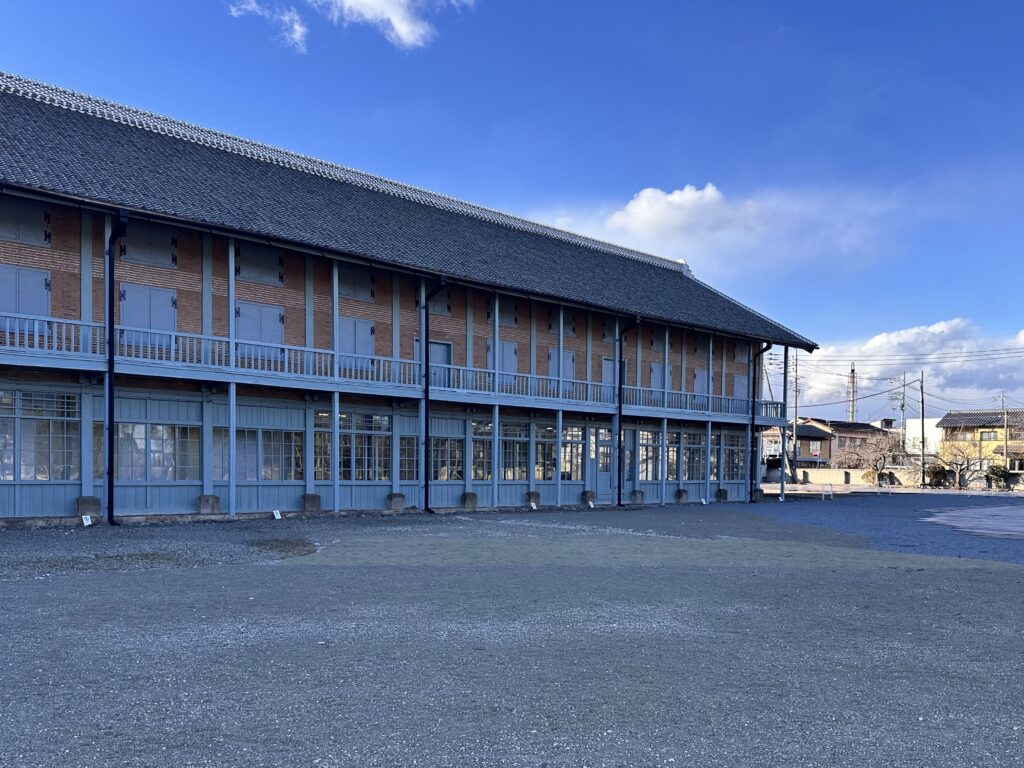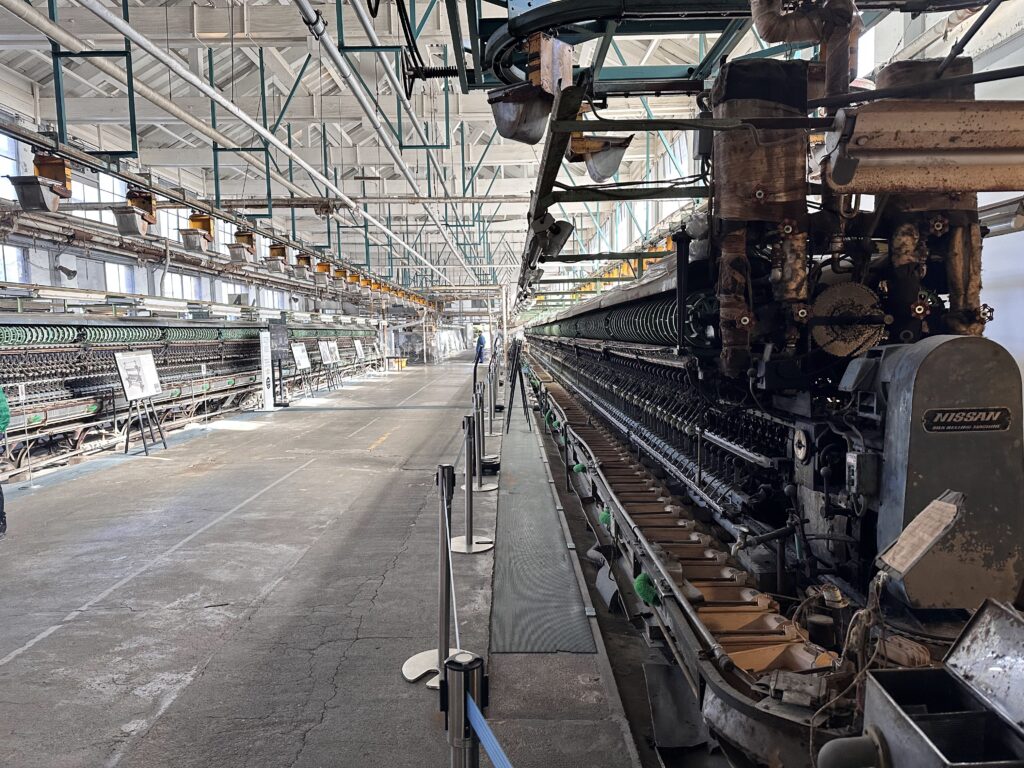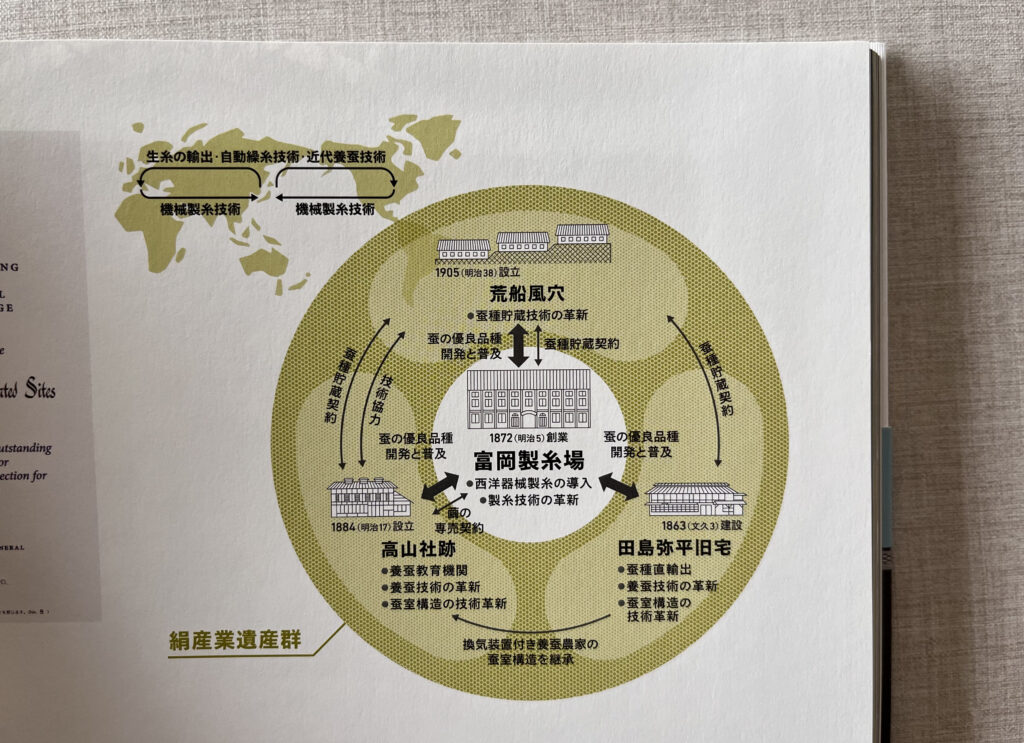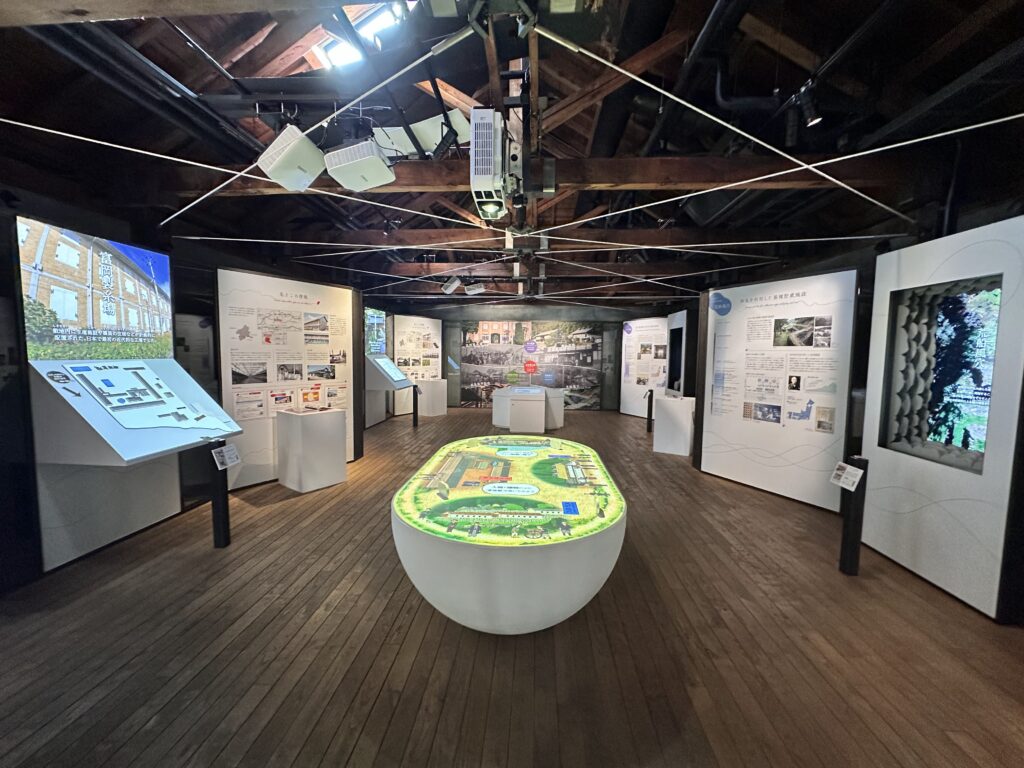Following historical coordinates, weaving a network of cultural heritage regeneration:
Notes from a visit to Tomioka Silk Mill
As contemporary society moves toward post-industrialization, the factory equipment that once drove the era has been gradually phased out. However, the technology, concepts, social structures, and industrial development processes they carried are important landmarks along the evolution of human civilization. Therefore, while maintaining the hardware structure of industrial heritage, creating continuity for its industrial context and local connections, and transforming it into values that meet contemporary needs is the current trend in the preservation and revitalization of cultural heritage.
Located in Gunma Prefecture, the ‘Tomioka Silk Mill (Tomioka Seishijō)’ was a turning point in the modernization journey of Japan’s silk industry. It was once the world’s largest mechanized silk mill and holds special epoch-making significance for East-West technological exchange and women’s participation in the workforce. More than a hundred years later, this site of industrial and social transformation has not gathered dust despite the machines stopping. Instead, it has built a dense ‘cultural heritage ecosystem’ with surrounding related sites, translating and reproducing the once-flourishing silk culture of the area, providing an operational model for the regeneration of industrial heritage that can be referenced.
In early 2025, the X-Basic Planning team traveled to Japan to participate in the ‘International Symposium on the 10th Anniversary of Tomioka Silk Mill and Related Sites’ Inscription on the World Heritage List,’ and also visited the Tomioka Silk Mill in person to gain a deeper understanding of how this site has evolved into a cultural hub connecting past and present. This field study not only enabled the team to absorb its revitalization experience but also served as an opportunity to engage in dialogue with international cases—we hope to induce mutual inspiration and facilitate learning between the research and regeneration of Kaohsiung Port Area and Tomioka Silk Mill, jointly depicting a vision for sustainable development of cultural heritage.

Industrial Heritage Driving Social Progress
Compared to many world cultural heritage sites that are hundreds or thousands of years old, the Tomioka Silk Mill appears particularly ‘young’—it is neither an ancient temple nor a palace, but rather a testament to Japan’s active learning and implementation of Western industrial technology during the Meiji Restoration. At that time, the European sericulture industry had significantly declined due to Pébrine Disease, making ‘raw silk’ an important commodity in East-West trade. To balance both the quantity and quality of raw silk, Eiichi Shibusawa—an industrialist who assisted the Meiji government in promoting sericulture and was known as the father of Japanese capitalism—planned the construction of the Tomioka Silk Mill in 1871. He hired French engineer Paul Brunat to introduce modern production techniques and management systems. In just one year, the East and West Cocoon Warehouses and the Silk-Reeling Plant were completed; the following year, construction of the Director’s House (Paul Brunat’s residence), Female Workers’ Dormitory, and Inspectors’ House was also finished, forming a silk mill complex covering approximately 5.3 hectares. The factory buildings adopted a ‘wooden-framed brick structure’ based on French masonry techniques and other Western designs, while the roofs were covered with Japanese-style tiles. From architectural style to technical application, they fully demonstrated the era’s characteristic blend of Eastern and Western elements.


As Japan’s first government-operated mechanical silk mill, Tomioka was initially equipped with 300 reeling machines, far exceeding the scale of European factories at that time, creating the world’s largest silk production base. In the 1890s, the Tomioka Silk Mill transitioned to private ownership. Through several changes of hands, it continuously acquired updated machinery and improved silkworm varieties, pushing Japan’s silk production to the first place worldwide. After World War II, the operator Katakura Industries Co., Ltd. introduced automatic reeling machines, further enhancing production efficiency.
The Tomioka Silk Mill was not only a site of technology transfer but also a microcosm of Japan’s social modernization. In an era when women rarely had opportunities to work outside the home, the factory offered relatively generous wages and working conditions, attracting women from all regions to enter the labor market. The ‘female workers,’ who constituted 80% of the silk mill’s labor force, not only learned advanced silk-making techniques but also gained exposure to modern lifestyles. After completing their training and returning to their hometowns, they continued to promote new knowledge, serving as an important force driving social development. Furthermore, the early exchange and cooperation between Japanese and French engineers laid the foundation for future international collaboration. Tomioka City seized this opportunity to establish a sister city relationship with Bourg-de-Péage, the birthplace of Paul Brunat.
As Japan’s silk industry declined gradually, Tomioka Silk Mill ended its 115-year production history in 1987, and was taken over by the Tomioka City government for management and operation in 2005. Its main buildings were designated as Important Cultural Properties of Japan the following year, and in 2014, it was inscribed on the World Heritage List as ‘Tomioka Silk Mill and Related Sites.’
From Point to Area: Building an Ecosystem of Cultural Heritage

Even before Tomioka Silk Mill became history, Katakura Industries was already deeply aware of its historical and cultural value. In 1972, to commemorate its centennial anniversary, the factory collaborated with the local government to open the still-operating silk mill to the public. They held a ‘100th Anniversary of Modern Industry’s Origin’ celebration, presenting valuable historical materials since the factory establishment through exhibitions. Later, they established a historical research and compilation plan, spending four years to complete ‘The Chronicle of Tomioka Silk Mill.’ After operations ceased, Katakura Industries maintained its commitment to ‘not sell, not lease, and not demolish’ the site, carefully maintaining the factory buildings and machinery. This allowed the industrial heritage to retain its original appearance even after being idle for over a decade, preserving the essence of the site even as its role evolved with the times.
Today, under the leadership of the Tomioka City government, Tomioka Silk Mill continues to undergo restoration and adaptive reuse projects. The ‘West Cocoon Warehouse,’ which completed restoration in 2020, now preserves the building’s original texture within a steel and glass structure, displaying content such as the mill’s founding history and the lives of female workers. The ‘Silk-Reeling Plant’ not only presents the historical appearance of the factory but also demonstrates the silk-reeling process through replicated machinery. The ‘East Cocoon Warehouse’ now serves as an exhibition space and shop for silk products. In recent years, Tomioka Silk Mill has also attempted to introduce diverse reuse approaches, such as hosting concerts and art festivals combining projection mapping with contemporary music, injecting innovative vitality into the factory area.
From a broader perspective, the preservation and revitalization of Tomioka Silk Mill is not limited to factory restoration and reuse, or single-point museum planning. Tomioka City uses the silk mill as a core space to connect surrounding silk industry heritage sites, residences of historical figures, and sericulture educational institutions, thereby constructing a complete cultural heritage ecosystem. The symbiosis and integration of related heritage sites not only allows visitors to follow the silk industry context to fully understand the technological and social changes during the Meiji Restoration period but also brings opportunities for history-based revitalization to the local community.
At the ‘Former Residence of Tajima Yahei’ and ‘Takayama-sha Site,’ which are also World Heritage sites, we can learn about the innovation of sericulture technology at that time and the history of exporting improved silkworm varieties to Europe. At ‘Arafune Cold Storage,’ we can appreciate the wisdom of ancestors who used natural refrigeration designs to control the sericulture environment. These heritage sites echo and complement each other as an organic whole, consolidating local identity and giving contemporary meaning to seemingly declining industries. Local governments, private enterprises, academic institutions, and community organizations can also find their positions within this ecosystem, jointly promoting the preservation and revitalization of cultural heritage and local industries.



From Gunma to Kaohsiung: Converging Paths to Sustainable Cultural Heritage
Though both involve the adaptive reuse of local cultural heritage, the X-Basic Planning team’s approach in Kaohsiung Harbor District has taken a path distinctly different from that of the Tomioka Silk Mill. Unlike the latter and its surrounding sites that present the development of a single industry, the historical landscapes scattered throughout Kaohsiung Harbor reflect the multidimensional aspects of the port city’s development through diverse functions—’KW2 Warehouse,’ which once served as storage space; the ‘Kaohsiung Lighthouse,’ which illuminated shipping lanes; and the ‘Cijin Ferry Terminal,’ which was a hub for water transportation. Though each carries unique historical memories, they have all inevitably declined or been left idle with the changing times.
The X-Basic Planning team, participating in the revitalization of these spaces, views these historical landscapes as an organic whole closely connected to urban development. Rather than focusing entirely on cultural preservation, the team’s approach emphasizes the integration of historical context with contemporary life, viewing the renewal of these sites from a more flexible perspective. Therefore, while striving to preserve the historical texture, we have introduced commercial activities, arts performances, and food services, transforming old buildings from mere relics to be redesigned into organic spaces that can drive local revitalization. Through collaboration with local communities, we have jointly created a cultural heritage ecosystem where the old and new are interwoven. On this occasion, X-Basic Planning collaborated with Professor Li Zhao-Xiang from the Department of Interior Design at China University of Technology to write a paper titled ‘The Management Approach to Historical Port Warehouses,’ sharing Kaohsiung Harbor’s regeneration philosophy at the ‘International Symposium on the 10th Anniversary of the Tomioka Silk Mill and Related Sites’ Inscription on the World Heritage List.’

During this visit to Tomioka, we deeply realized that whether it’s the network-based preservation model of Tomioka Silk Mill centered on research and exhibition, or the multi-point integrated management of Kaohsiung Port Area focused on revitalization and regeneration, both are valuable attempts to add contemporary value to cultural heritage. As emphasized in the ‘Gunma Declaration,’ the exchange networks between cultural heritage sites and their close connections with local life are important foundations for maintaining diversity and sustainability. When facing prospects for the adaptive reuse of contemporary industrial heritage sites, we must further consider ways to interpret the gradually disappearing techniques and cultures to highlight their multi-faceted significance across different eras.
Further Reading
[Island Brocade, Weaving a New Chapter in International Cultural Preservation | 1/11 (Sat) Notes from the Tomioka Silk Mill International Forum]
[Listening to Ocean Tides and Ship Sounds, with Local Development’s “Drumming Welcome” | 5/1 (Wed) Cijin Ferry Station Opening Tea Party]
